
The Teatro Colón is a historic opera house in Buenos Aires, Argentina. It is considered one of the ten best opera houses in the world by National Geographic. According to a survey carried out by the acoustics expert Leo Beranek among leading international opera and orchestra directors, the Teatro Colón has the room with the best acoustics for opera and the second best for concerts in the world.
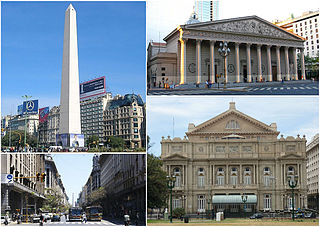
San Nicolás is one of the neighbourhoods of Buenos Aires, Argentina, sharing most of the city and national government Neighborhood of Buenos Aires with neighboring Montserrat and home to much of the financial sector. It is referred usually as El Centro, and the part east of the 9 de Julio Avenue is known as Microcentro.

Avenida Corrientes is one of the principal thoroughfares of the Argentine capital of Buenos Aires. The street is intimately tied to the tango and the porteño sense of identity. Like the parallel avenues Santa Fe, Córdoba, and San Juan, it takes its name from one of the Provinces of Argentina.

Banco de la Nación Argentina is a large bank in Argentina, and the largest in the country's banking sector.
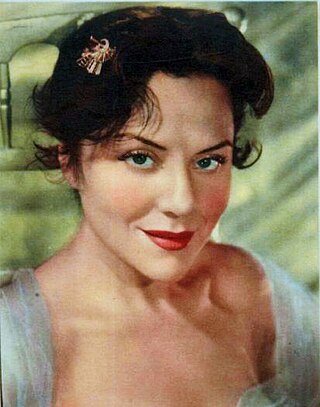
Amelia Bence was an Argentine film actress and one of the divas of the Golden Age of Argentine Cinema (1940–1960).

Mecha Ortiz was a classic Argentine actress who appeared in films between 1937 and 1981, during the Golden Age of Argentine Cinema. At the 1944 Argentine Film Critics Association Awards, Ortiz won the Silver Condor Award for Best Actress for her performance in Safo, historia de una pasión (1943), and won it again in 1946 for her performance in El canto del cisne (1945). She was known as the Argentine Greta Garbo and for playing mysterious characters, who suffered by past misfortunes in love, mental disorders, or forbidden love. Safo, historia de una pasión was the first erotic Argentine film, though there was no nudity. She also played in the first film in which a woman struck a man and the first film with a lesbian romance. In 1981, she was awarded the Grand Prize for actresses from the National Endowment for the Arts.
Coronel Pringles is a city in the south of the Buenos Aires Province in Argentina, situated near the mountains of Pillahuincó. It is the government seat of the Coronel Pringles Partido.
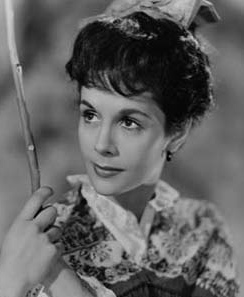
Delia Amadora García Gerboles better known as Delia Garcés was an Argentine film actress of the Golden Age of Argentine Cinema (1940–1960). She made almost 30 appearances in film between 1937 and 1959 and acted on stage from 1936 to 1966. She won the Premios Sur Best Actress award three times from the Argentine Academy of Cinematography Arts and Sciences, as well as the Argentine Film Critics Association's Silver Condor Award for Best Actress, the Premios Leopold Torre Nilsson, Premio Pablo Podestá, and the inaugural ACE Platinum Lifetime Achievement Award from the Asociación de Cronistas del Espectáculo.

Laura Ana "Tita" Merello was an Argentine film actress, tango dancer and singer of the Golden Age of Argentine Cinema (1940–1960). In her six decades in Argentine entertainment, at the time of her death, she had filmed over thirty movies, premiered twenty plays, had nine television appearances, completed three radio series and had had countless appearances in print media. She was one of the singers who emerged in the 1920s along with Azucena Maizani, Libertad Lamarque, Ada Falcón, and Rosita Quiroga, who created the female voices of tango. She was primarily remembered for the songs "Se dice de mí" and "La milonga y yo".
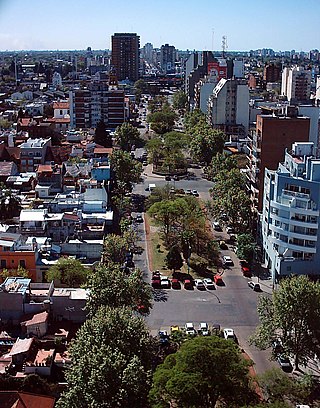
Saavedra is a barrio or neighbourhood of Buenos Aires, Argentina. It is located in the Northern end of the city, close to Nuñez and Villa Urquiza. Its northern border is Avenida General Paz. Among the main features of the neighbourhood is the Parque Saavedra, which has large picnic areas and sports facilities. During weekends, many wealthy inhabitants of Buenos Aires pass through Saavedra en route to their larger estates and country clubs. The barrio was named after Cornelio Saavedra, president of the First Governing Board, during the May Revolution of 1810.

The Teatro Gran Rex is an Art Deco style theatre in Buenos Aires, Argentina which opened on July 8, 1937, as the largest cinema in Argentina.

The Teatro Nacional Cervantes in Buenos Aires is the national stage and comedy theatre of Argentina.
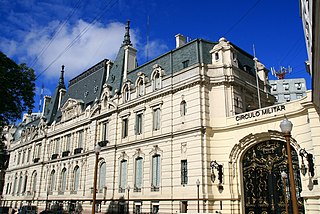
The Paz Palace is a former mansion in Buenos Aires, Argentina, housing the Military Officers' Association, a social club maintained by the Argentine military.

The Avenida Theatre is a theatre in Buenos Aires, Argentina.
The Teatro Opera is a prominent cinema and theatre house in Buenos Aires, Argentina.

The Plaza Hotel Buenos Aires is a currently closed five-star hotel in the Retiro district, just steps from the Calle Florida shopping area and overlooking the Plaza San Martín. The hotel, inaugurated in 1909, was part of several international chains including InterContinental, and Marriott, until it was closed in 2017.

Paseo La Plaza is a cultural and commercial complex in the San Nicolás neighborhood of Buenos Aires, Argentina. The complex hosts theater performances and various types of congresses and conventions. It also has gastronomic and commercial venues. It is located in the heart of the theater area of Avenida Corrientes, near the General San Martín Theater, the General San Martín Cultural Center and other prominent venues.

The French blockade of the Río de la Plata was a two-year-long naval blockade imposed by France on the Argentine Confederation ruled by Juan Manuel de Rosas. It closed Buenos Aires to naval commerce. It was imposed in 1838 to support the Peru–Bolivian Confederation in the War of the Confederation, but continued after the end of the war. France did not land ground forces, but instead took advantage of the Uruguayan Civil War and the Argentine Civil Wars, supporting Fructuoso Rivera and Juan Antonio Lavalleja against Manuel Oribe and Rosas.

Buenos Aires is one of the world's capitals of theatre. The Teatro Colón is a national landmark for opera and classical performances; built at the end of the 19th century, its acoustics are considered the best in the world, and has undergone a major refurbishment in order to preserve its outstanding sound characteristics, the French-romantic style, the Golden Room, and the museum at the entrance. With its theatre scene of national and international caliber, Corrientes Avenue is synonymous with the art. It is thought of as the street that never sleeps, and sometimes referred to as the Broadway of Buenos Aires. Many careers in acting, music, and film have begun in its many theaters. The Teatro General San Martín is one of the most prestigious, along Corrientes Avenue, and the Teatro Nacional Cervantes functions as the national stage theater of Argentina. The Teatro Argentino de La Plata, El Círculo in Rosario, Independencia in Mendoza, and Libertador in Córdoba are also prominent. Griselda Gambaro, Copi, Roberto Cossa, Marco Denevi, Carlos Gorostiza, Alberto Vaccarezza and Mauricio Kartun are a few of the more prominent Argentine playwrights. Julio Bocca, Jorge Donn, José Neglia, and Norma Fontenla are some of the great ballet dancers of the modern era.

The Teatro Coliseo is a theatre in Retiro neighbourhood in Buenos Aires, Argentina which opened on July 8, 1905.





















